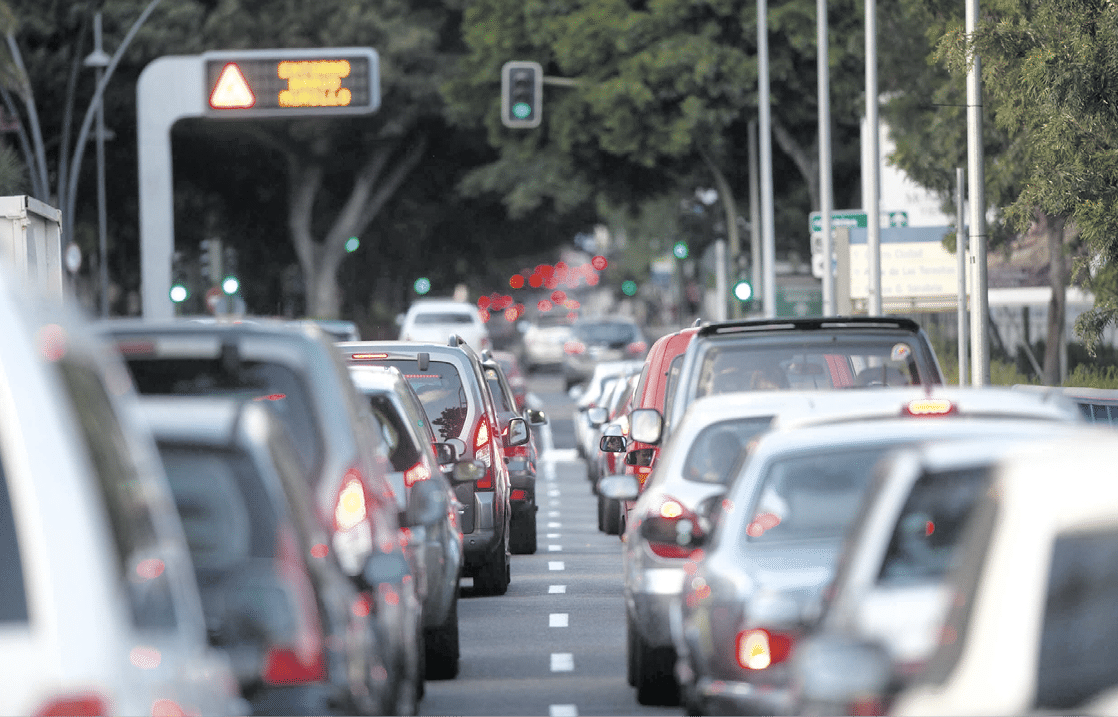
The Santa Cruz City Council is immersed in the drafting of a new Action Plan for Climate and Sustainable Energy (PACES). After the first meetings held in December, with the participation of different groups, it continues to advance towards the preparation of a first draft of the PACES actions, which will also include participatory processes.
Santa Cruz joined the Covenant of Mayors in 2013, with the commitment to reduce its CO2 emissions by 20% by 2020, an objective that was successfully achieved. However, in the face of this public achievement, the city is facing a lack of control in emissions from private transport, which have been increasing by the same percentage as public ones have been reduced. Thus, based on the measurement made in 2008, the sector has increased its emissions by more than 20 percentage points, so that it went from being responsible for 33% of CO2 pollution in Santa Cruz in 2008, to 55% in 2020.
The recent announcements of the implementation of the so-called Low Emissions Zones is one of the main tools to attack pollution that, no matter how much the public sphere meets objectives, leaves the private sphere in continuous growth.
After getting with Covenant of Mayors reduce the level of public emissions by that 20%, in April 2021 it was decided to extend this objective fulfilled with the adhesion to the European Covenant of Mayors for Climate and Sustainable Energy, setting a new goal that seeks to continue with the reduction of emissions of CO2 in its territory by 40%, before 2030 through the improvement of energy efficiency and greater use of renewable energy sources, as well as increasing its resilience by adapting to the repercussions of climate change.
The City Council is immersed in this work with the inventory of reference emissions that is already known and an assessment of risks and vulnerabilities derived from climate change. The work will conclude with the presentation of an Action Plan for Climate and Sustainable Energy and will prepare a report at least every two years from the presentation of the PACES for evaluation, monitoring and control purposes.
According to the previous documents that are being worked on, the Reference Emissions Inventory (IER) sets its sights on 2008, the year with which the 2020 data is compared.
Thus, 24 years ago, the data reflected that with regard to buildings, equipment and industry, municipal buildings accounted for 3.7% of total CO2 emissions into the atmosphere; tertiary buildings and equipment and facilities were 23%, and residential buildings 19%.
Regarding transport, the municipal fleet contributed 0.23% and public transport another 0.56%. The major emitter of CO2 in this section was commercial and private transport, with 33% of CO2 emissions. Agriculture, forestry and fishing barely contributed 0.38%, while the part of activities not related to energy, specifically the generation of waste, accounted for another 3%. Thus, as a whole, in 2008, the energy consumption of the different sectors in Santa Cruz amounted to more than 2.8 million megawatts/hour, while total CO2 emissions accounted for 1.2 million tons.
The result of the IER in 2008 is that the Santa Cruz City Council consumed 3% of the total energy produced, while its CO2 contribution was 5%. These data for 2020 reflect that the City Council complied with its commitment to reduce emissions, by lowering its consumption to 0.94% of the total and its emissions fell to 1.74% of the total.
However, these same data reflect that, while the rest of the sectors accompanied the City Council in its decrease in pollution, in relation to private and commercial transport, not only have their emissions not been reduced, but they have grown. Thus, in 2020, this sector accounted for 73% of the total energy consumption of the municipality and contributed 55% of CO2 (in 2008 it was 33%).
What the PACES can do to continue improving and achieve that 40% reduction in CO2 emissions in the public area has to do with the implementation of multiple actions such as surrounding vegetation around buildings, renewable energies for space heating and hot water supply or efficient lighting system.
With regard to public transport, it is proposed that the municipal fleet have cleaner vehicles, opting for electric ones, supporting the modal transfer towards public transport and journeys on foot or by bicycle, promoting car sharing, or the use of mixed-use development and contain sprawl. These same premises will apply to public and private transport.
Possible explanation for the increase in CO2 in Santa Cruz
The Councilor for Public Services and Environmental Sustainability responded this week to United We Can, which was interested in this rise in energy consumption and emissions from private transport, which, a possible explanation, is that the park of municipal vehicles it has gone from approximately 169,927 units in 2008 to 171,063 in 2020, also giving the circumstance that its composition has changed in favor of a greater growth of vehicles that use diesel as fuel, which is more polluting.
On the other hand, the electrification of the mobile fleet is still limited and in 2020 there were only 381 units, that is, 0.22% of the total. The data source used is the statistical series of the fleet of vehicles in circulation according to vehicle types by municipalities and periods, prepared by Istac.
Even so, from Public Services it is clarified that the data is still in the verification period, so they are waiting for the PACES work to be completed for its final publication.














